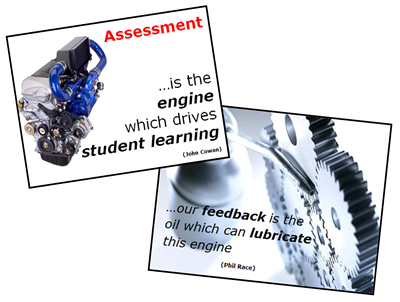Well-thought-out and varied assessments help create powerful online learning environments that embrace diversity, authentic learning, meaningful communication, reflection, and presentation of knowledge, creativity, discovery, and wisdom.
 Assessments are a major part of the online learning process and can take the majority of an instructor’s time to develop and then manage when the course is in progress. So, it is important to devote significant time to ensure that the assessments are very clear so students to understand why they received the grade or points they did and why these assessments are important to their learning.
Assessments are a major part of the online learning process and can take the majority of an instructor’s time to develop and then manage when the course is in progress. So, it is important to devote significant time to ensure that the assessments are very clear so students to understand why they received the grade or points they did and why these assessments are important to their learning.
The foundation of assessment is the determination of individual student mastery of the desired learning outcomes. Student assessment includes instructor assessment of the student, student self-assessment, and peer assessment. The assessment can be:
-
diagnostic, meaning a determination of students’ prior knowledge and misconceptions;
-
formative, meaning performance feedback designed primarily to improve learning; or
-
summative, meaning assignment of a final grade or decision about performance that could affect student progress in a program.
Methods for assessing student performance include quizzes/tests/exams (e.g., multiple-choice, matching, true/false, short answer, essay, etc.); written or verbal cases studies, papers, essays, problems, projects, journals, portfolios, presentations; simulations (e.g., computer-based, use of real patients or actors, real or mock practice settings, etc.); and direct observation (e.g., experiential rotations, etc.).
Assessment involves setting appropriate criteria and high standards for learning quality; systematically gathering, analyzing, and interpreting evidence of this learning from a variety of diverse sources; and using the evidence to document and explain performance. “Completing the loop,” i.e., using the results to make changes to improve learning and student performance, is a necessary step in the assessment process.